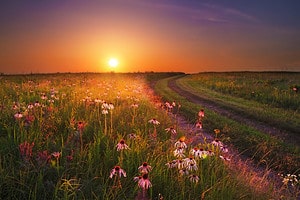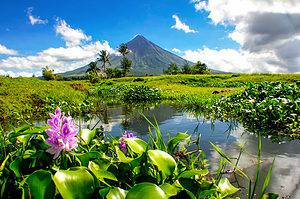When it comes to picking the best annual flowers for Arizona, it all comes down to durability, color, and personal preferences! However, some species grow much better in the low desert climate found across most of the state.
Something that sets Arizona apart from other states is the importance of timing when it comes to planting. Unlike many other places, seasons in Arizona are short and they transition quickly. Knowing which flowers grow best and when to plant them is key! Here are the 6 best annual flowers for Arizona and information on planting times and conditions.
Zinnias
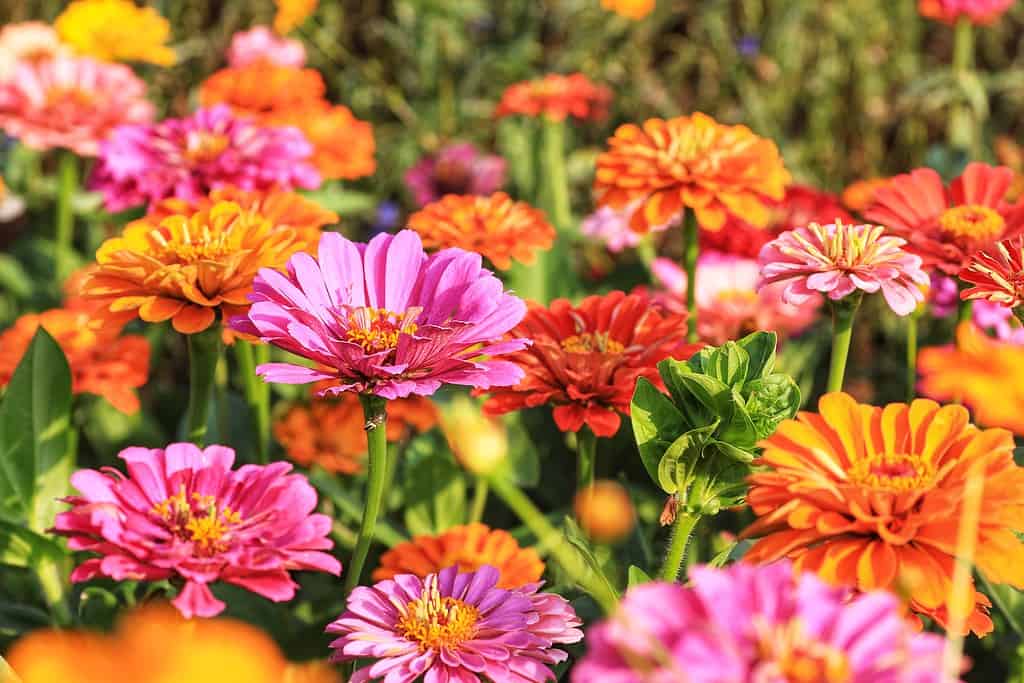
When grown properly, zinnia flowers are drought-tolerant and disease-resistant.
©Ronnakorn Chaiyasaengcharoen/iStock / Getty Images Plus via Getty Images
Zinnias are gorgeous, vibrant-colored annuals that grow well from seed. Since they’re hardy to hot summers, they’re a great choice for Arizona’s warm climate. Zinnias tend to do best when planted from seed indoors and then transitioned into the garden. You can plant them in seed-starting trays a few weeks before the last frost of the season. Then, once they’ve grown a few inches tall you can transplant them in the garden. This should be sometime around late April or early May.
The most important thing to remember is that zinnias are warmth-loving plants, so you’ll want to make sure the ground has warmed by the time you plant them. If that means waiting a few extra weeks, it may be worth it to ensure that they grow well.
After planting, zinnias have a long blooming period that stretches from April to November. They produce large pink, yellow, orange, and white blooms. Zinnias are a pollinator-friendly plant that will attract tons of bees and butterflies to your yard. Be sure to save their seeds once they die in the winter to replant again next year!
Angelonia
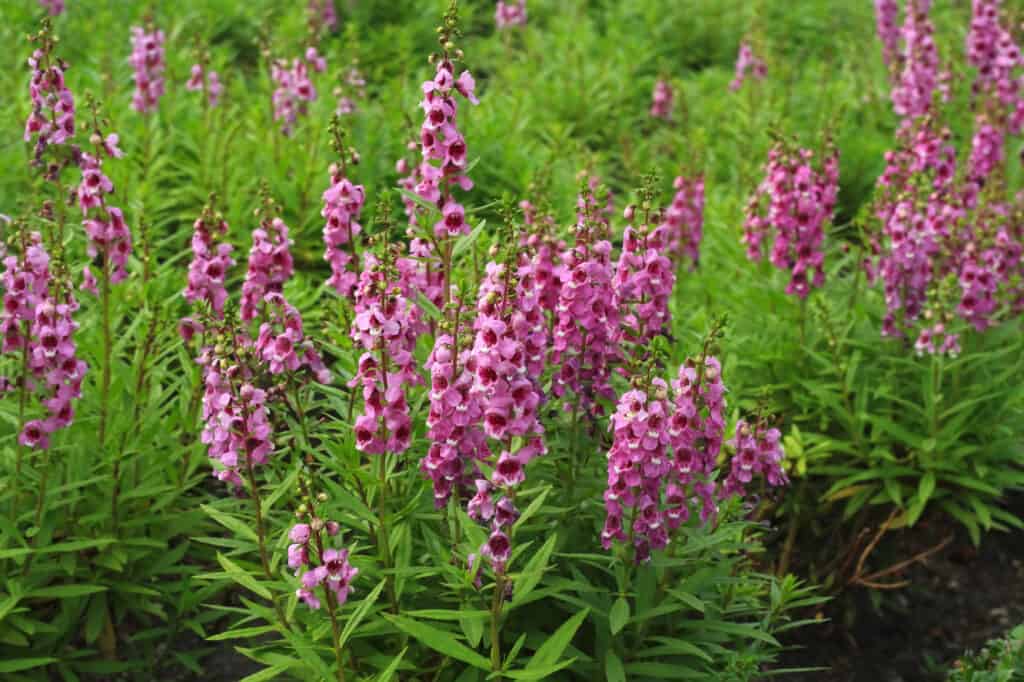
Angelonia produces tall blooms that come in many vibrant colors.
©iStock.com/pimonpim
Angelonia, also called summer snapdragon, is an herbaceous annual from Central and South America. While it’s technically an annual, many Arizonans have found that covering the plants in winter will prevent them from freezing. The best time to plant angelonia is after the last frost of the season. They grow best from small seedlings rather than seeds, which you can find at your local nursery. Once it grows, angelonia will produce flowers for most of the warm season. The flowers come in shades of white, purple, and red.
They grow well in full to partial sun and make great container plants as well as border plants. Since angelonias are so versatile, you’ll find that they can grow well in nearly any spot as long as they get sun.
Celosia
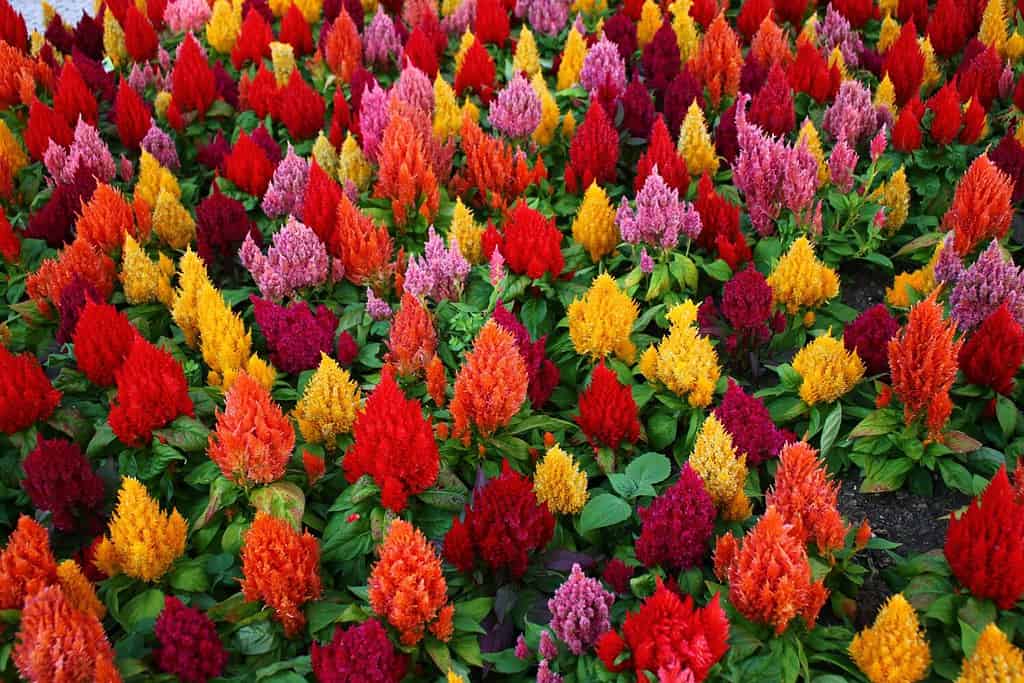
Celosia grows well in groups and as a groundcover.
©Granadeiro/Shutterstock.com
Celosia flowers are vibrant-colored, unique-looking blooms that look great in any garden. They come in shades of red, yellow, and pink and look similar to Truffula tufts from The Lorax. Celosia flowers are also called woolflowers or cockscomb because they look like a rooster’s comb.
Celosia grows best in well-drained soil and full sun. One great thing about these annuals is that they basically take care of themselves. You won’t have to worry about replanting them season after season. That’s because the tiny flowers drop seeds that will continue resprouting every year!
Sunflowers
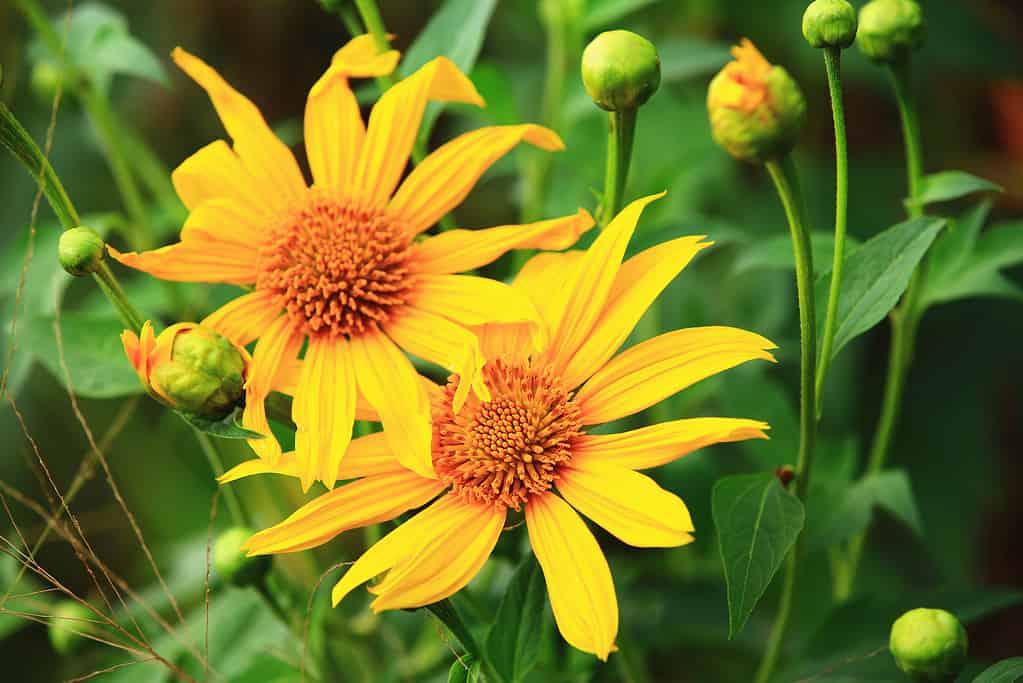
There are tons of varieties of sunflowers to choose from in many shapes and sizes.
©happykamill/iStock via Getty Images
If you want a flower that will brighten your yard, sunflowers are a great choice. They’re also very easy to grow in the dry Arizona heat. You’ll want to plant sunflower seeds in February or March and they’ll bloom throughout most of the summer and fall.
The best thing about sunflowers is that they will come back year after year since they drop their seeds. You can also harvest the seeds and plant new rows of sunflowers each year if you’d prefer a more organized look.
Be sure to plant sunflowers in a place where they’ll receive full sun, and water them regularly. Sunflowers are some of the fastest-growing plants and they’ll be fully grown in a little over three months.
Verbena
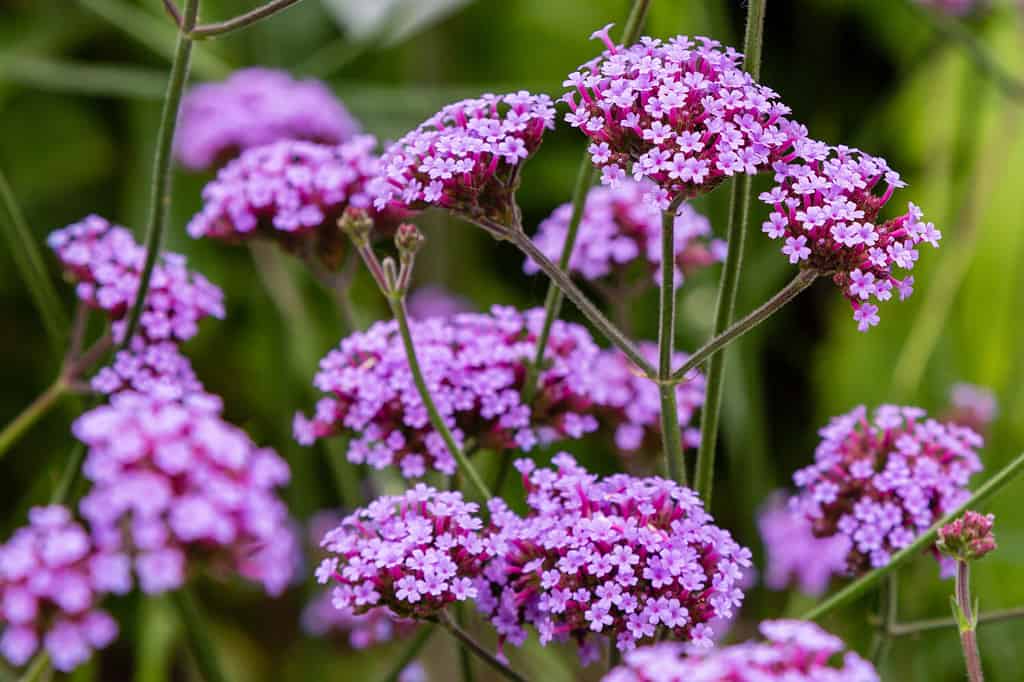
Verbenas make great additions to any flower arrangement.
©Flower_Garden/Shutterstock.com
If you’d like a versatile flower that looks great in the garden and as a cut flower, consider verbenas. They grow as both annuals and perennials depending on the variety and the location where they’re planted. Since verbena is intolerant of frost and freezing, it grows as an annual in places like Phoenix.
You’ll want to plant verbena in the spring, a few weeks after the last frost date. It does best in areas with full sun and well-draining soil. In hotter parts of the state, verbena may prefer a bit of afternoon shade.
Marigolds
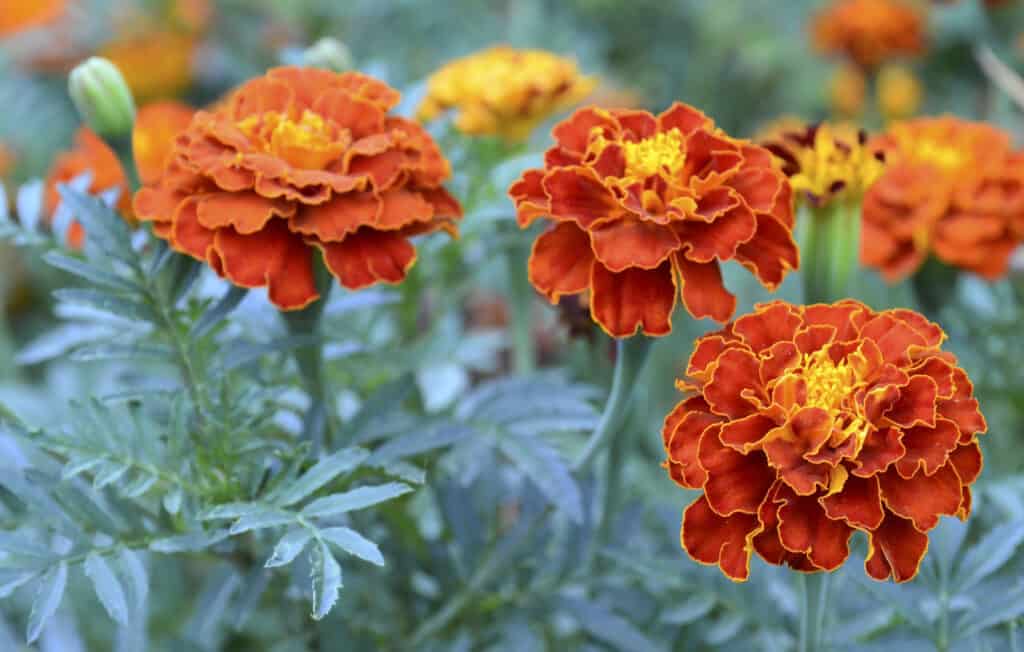
Marigolds repel pest animals and keep your garden healthy!
©iStock.com/svf74
One great option for those who grow crops as well as flowers is marigolds. That’s because they naturally deter pests from the garden, so they can help protect your vegetables!
Marigolds come in beautiful shades of red, yellow, and orange and they look great in any garden. Plant marigolds after the last frost and they’ll flower from mid-summer until the season’s first frost. They grow best in well-draining soil and in full sun.
| # | Flower | Best Area to Plant |
|---|---|---|
| 1 | Zinnia | Full sun |
| 2 | Angelonia | Full to partial sun |
| 3 | Celosia | Full sun |
| 4 | Sunflowers | Full sun |
| 5 | Verbena | Full sun |
| 6 | Marigolds | Full sun |
The photo featured at the top of this post is © Granadeiro/Shutterstock.com
Thank you for reading! Have some feedback for us? Contact the AZ Animals editorial team.




